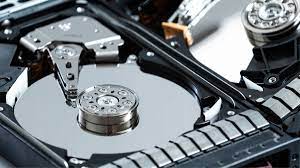Peter Kazansky has been working on something called five-dimensional, or 5D, data storage since 2014, and in October he and research partners announced that they’d cracked it: a new way to store large amounts of data on a disc the size of a CD, using a format that could boiled, baked, flooded, or demagnetized without degrading.
“That was the first demonstration,” Kazansky, a professor in the Optoelectronics Research Centre at the University of Southampton, says. “Now we are moving into the practical.”
The latest iteration of his work is a disc with a 500 terabyte capacity. For context, in 2012, the Library of Congress had over 3,000 terabytes of data. So 16 percent of the Library of Congress’ holdings could be housed on this one disc. That means with just a few of these discs, the whole Library’s holdings could be preserved.
As Avi Greengart, president and lead analyst for research firm Techsponential, points out, the world is now experiencing an explosion in data. “That means the industry needs more extremely high capacity storage mechanisms with both fast read and write times and improved longevity,” he says.
What we currently use to store data isn’t capable of that kind of longevity. That’s magnetic tape—such as with an old VHS tape or cassette tape—and hard drives, which are the common data storage mediums for places like museums and archives. But those hard drives and cassettes can only last so long. Kazansky’s discovery could be a long-term solution to what could eventually be one of civilization’s biggest problems.
“The information stored on CDs or DVDs can last maybe 10 years,” says Kazansky. (It can vary.) “With magnetic tape, it could last 15 years, and with hard drives maybe five years. But with this new method of ultrafast laser writing, we can archive things indefinitely.” Plus, files preserved on floppy discs, or music preserved on cassette tapes, may eventually become inaccessible as the tools used to read those mediums become antiques and fall out of use entirely.
Because of concerns about data degrading over time, data stored in digital formats has to be migrated every few years. This is an expensive, time-consuming process that Kazansky knows well, as he and his team have spent years working with the Library of Congress to address this issue.
“If we succeed at this, it will not be necessary to migrate data,” he says. “It will solve this problem.”
In fact, we could be living in what some call a digital dark age. That’s the idea that we’re not leaving a durable enough record of our lives for future generations, because the file formats, software and hardware we use to save our data are not built to last long-term.
“We may know more about ancient generations with their stone etchings than future generations will know about us,” says Kazansky, “because all of our archival storage is hosted digitally, in places where it will for sure degrade.”
Source : https://www.popsci.com/technology/5d-disc-stores-500-tb-of-data/









